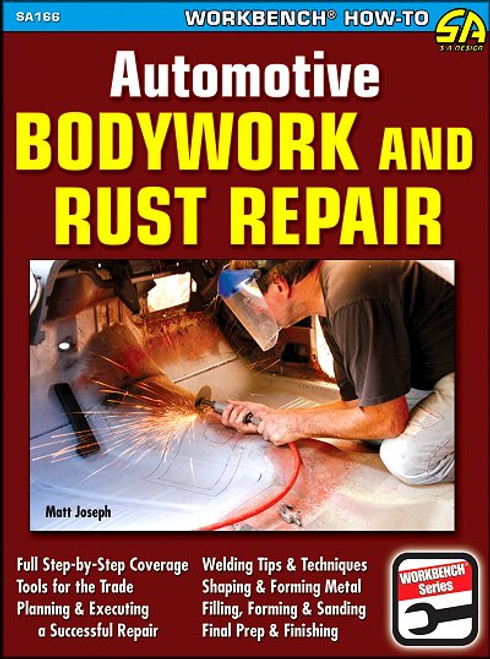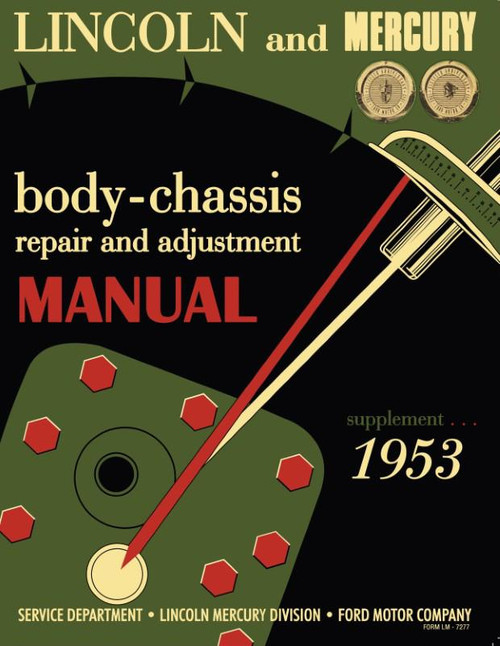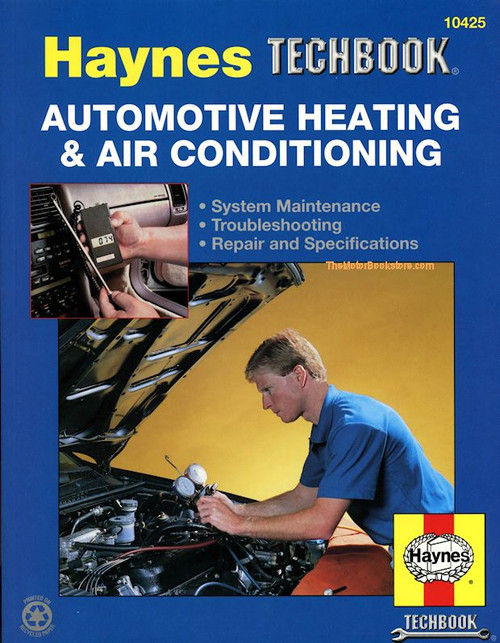Automotive bodywork repair, surface prep and painting is one of those things that take a little practice and, especially, preparation. Most do-it-yourself mechanics will, at one point or another, face the need to perform some bodywork and possibly have to spray some paint on their project vehicle, and that's when the Automotive Body Repair and Painting Manual by Haynes, comes into play. This manual will show you, with plenty of close up photos and easy-to-understand text instructions, how to:
PAINTING
Subject: Transportation: Automotive: Auto body repair and painting. ISBN-10: 1850104794 | ISBN-13: 9781850104797 | Haynes 10405
- Rustproof your vehicle
- Apply undercoating
- Which tools and equipment you'll need
- How to repair minor dents and rust damage
- Metal working techniques
- Tackling major rust repairs
- Body component replacement
- How to properly sand and paint your car
- Car care and detailing
- Automotive welding
- and more!
Book Excerpt
MINOR BODY REPAIRSDEEP SCRATCHES Severe scratches, resulting in chipped paint, exposed sheet metal and perhaps even a crease or dent in the metal, are more difficult and time consuming to repair. You'll need the following materials for this job...NOTE: The following photos are keyed to the step by step procedure with a number in the upper left corner of each illustration. The number corresponds to the step number of the procedure.
- Lint free cloths
- Wax/silicone remover (DuPont Prep-Sol, Ditzler Acryli-Clean and 3M General Purpose Adhesive Cleaner and Wax Remover are the most common)
- A tack cloth
- Chemical metal conditioner (if bare metal is visible)
- Primer and touch up paint (available in aerosol cans)
- 320, 400 and 600 grit wet or dry sandpaper
- Spot putty (also called glazing compound)
- Masking materials (paper and tape)
- Rubbing compound
- Automotive wax
- If rust is involved, a chemical rust remover
- If a clearcoat is used, some touch up clearcoat
- The first step in repairing any paint scratch is to get it and the area around it completely clean, so wash the surface with mild soap and water, rinse it well and dry it with a lint free cloth. You absolutely have to get off all traces of old wax, which will keep the new paint from adhering properly. Automotive paint stores sell special cleaners designed to remove all traces of wax, grease, silicone and other sealers from the paint - buy and use one!
- Remove all traces of rust with 400 grit wet or dry sandpaper, and then use a chemical rust remover (follow the directions on the container). Apply the wax/silicone remover again.
- Sand over the area to be repaired with medium fine (320) grit sandpaper, but don't sand so hard you go right through the paint. All you want to do is clean off the top layer and start feathering down the edges of the scratch.
PAINTING
PAINTING PROBLEMS On the following pages, the most common problems that you'll run into when painting a car are illustrated and described (not necessarily ranked according to frequency of occurrence). Also outlined are the causes, the best way to remedy each problem and ways to prevent them from happening again or on other paint jobs. BLEEDING (see photo on page 9-15) Original paint finish discoloring or seeping through the new paint. Causes: Contamination, usually in the form of soluble dyes or pigments on the older finish before it was repainted. This is especially true with older shades of red. Solution: Apply two medium coats of sealer (DuPont 2184S Bleederseal, for example), and the reapply the new paint. Be sure to follow the instructions accompanying the sealer. Prevention: Thoroughly clean all areas to be painted before sanding, especially when applying lighter colors over darker colors. Avoid using lighter colors over older shades of red unless a sealer is applied first.
Subject: Transportation: Automotive: Auto body repair and painting. ISBN-10: 1850104794 | ISBN-13: 9781850104797 | Haynes 10405










